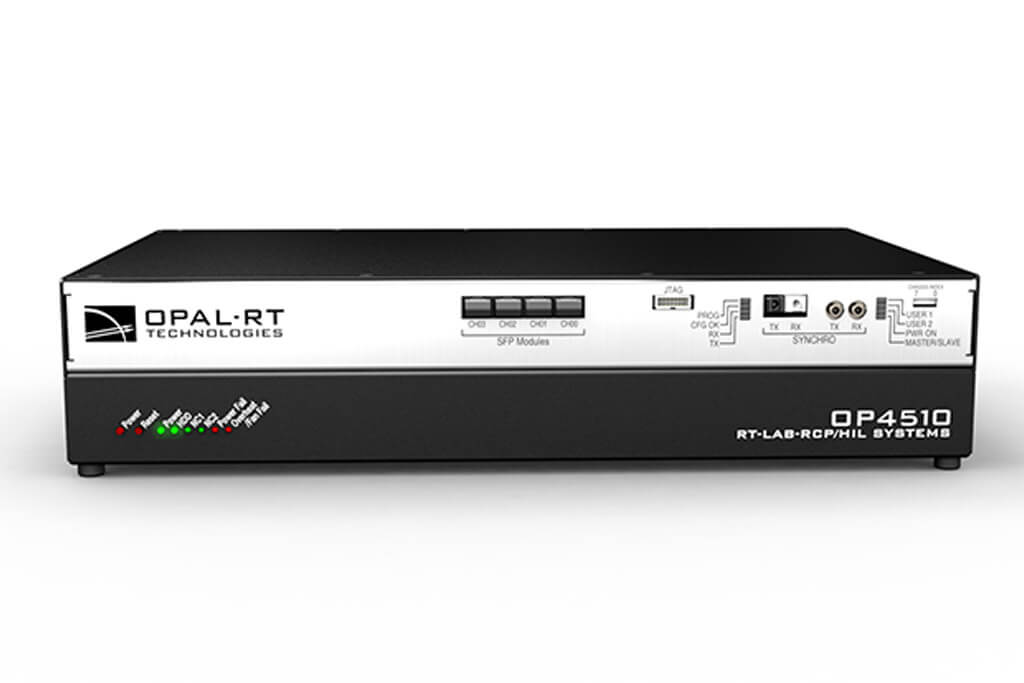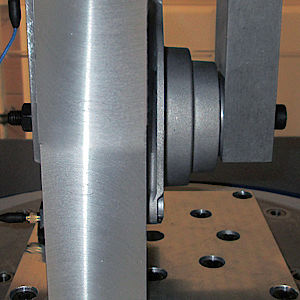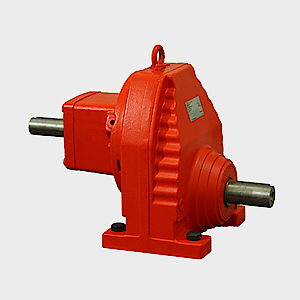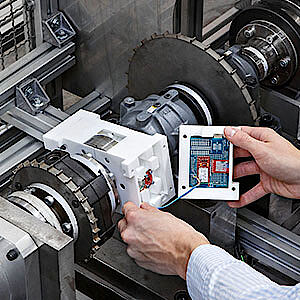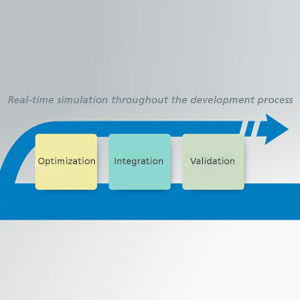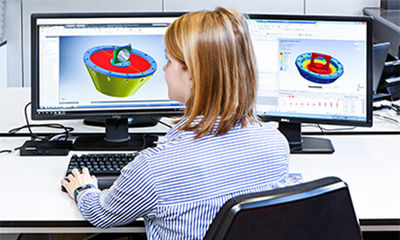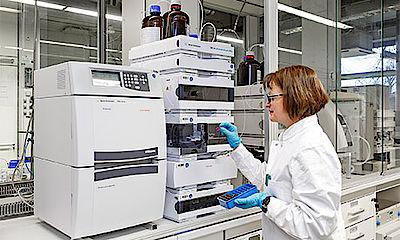Real-time simulation of mechatronic systems.
Real-time simulation, mechatronics, model-based development
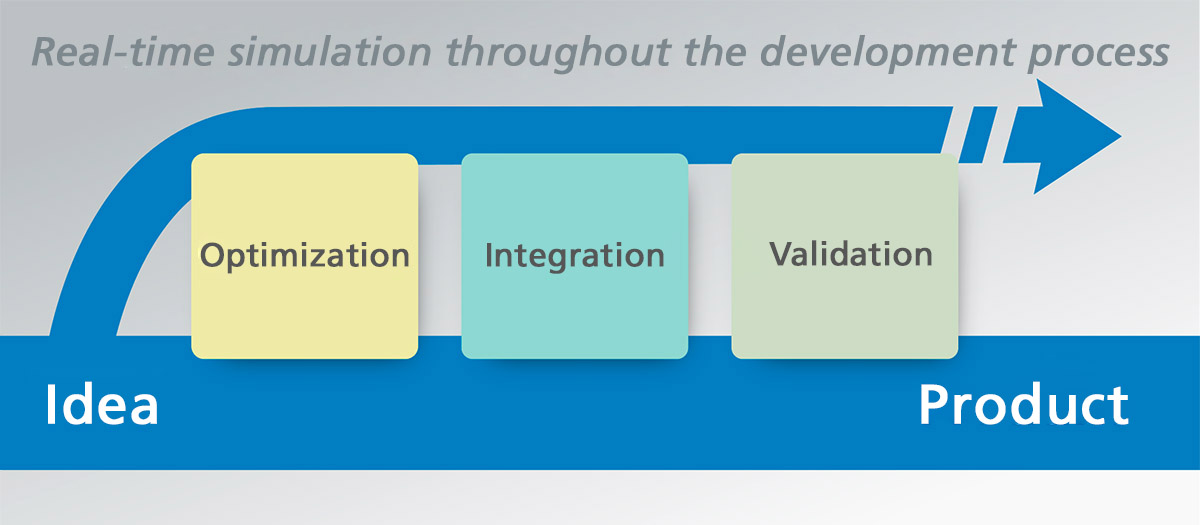
Due to global changes as well as increasing networking and digitalization, the German industry will face complex challenges in the future. The application of digital methods in product development, in particular, can help keep the creation of value in Germany – one of the top-ranking, industrial locations of the world – and ensure continued technical progress. In the recently completed project ”Digitalization in Testing Technology”, Fraunhofer LBF experts dealt with the question of how to speed up the development process from idea to individually customized product.
Development of mechatronic systems
Intelligent mechatronic products drive innovation in many industries. A particular challenge often arises in the development of customized and personalized products. The unique requirements for the entire system must be defined at an early stage of product development and considered throughout the development process. Particularly in the case of mechatronic systems, the underlying disciplines of structural dynamics, electrical engineering, actuators, and signal processing must be considered in a holistic concept, and interdependencies of the individual physical domains must be taken into account.
Real-time simulation throughout the development process
In the project ”Digitalization in Testing Technology”, the Fraunhofer LBF experts developed a procedure, in which concurrent real-time simulation supports the model-based development process throughout three main stages. In an early stage of system development, the design parameters of the mechatronic system are optimized through an automated process and an associated real-time simulation. In the continued development, real-time simulation models can be integrated into hardware-in-the-loop tests, which facilitate implementation of the control unit function while considering the overall system behavior. During system validation, the mechanical hardware-in-the-loop technology developed at LBF allows integration of real-time models in actual test rigs for mechatronic systems and makes it possible for mechanical properties of the entire system to be taken during system validation.
Procedure for generating real-time models
To generate real-time simulation models, an automated process was developed based on existing models of system simulations, finite element, multi-body or circuit simulations. The proprietary software transfers the models into a multi-physical simulation environment and, depending on the required model accuracy, reduces the states to be calculated. This procedure allows even complex models to be integrated into the real-time simulation. Taking into account the discrete-time calculation, a final conditioning process ensures high model accuracy up to the vibro-acoustic frequency range of 1 kHz. Fast parameter variations or different operating scenarios can be set through complete linking to a Python programming environment.
Application example of semi-active suspension design
Using the development of an active suspension as an example, the described procedure was applied in the project ”Digitalization in Testing Technology”, and a real-time simulation of the entire system with a including virtual driver and changing road surfaces was implemented. Beside a non-linear multi-body simulation of the chassis and a tire model, the model also includes the structural dynamics of the vehicle body in the form of a reduced order finite element model. The components of the suspension strut with semi-active shock absorption were considered physical lumped parameter models.
The reduction of model complexity was implemented using various methods. For example, the finite element model of the vehicle body was reduced from a few hundred thousand to a few hundred states by applying mathematical methods of model order reduction. The dynamic input/output behavior at the attachments points of the chassis as well as the comfort points on the seat rails in the interior are approximated within the defined frequency range. In addition, the chassis' multi-body models were processed for the real-time simulation using smart simplification; similarly, the complex elasto-kinematic transfer functions were modeled through novel functional descriptions.
The project used real-time simulation for the simulation-based optimization of suspension control. Furthermore, the real-time simulation of the entire system could be used in an operational structural durability test of the active suspension system.
Future application of the method
Fraunhofer LBF’s expertise in real-time simulation and model-based development can be used to directly address imminent challenges in the area of networking and digitalization. Simulation models support the product development process in model-based system design from an early stage on. The integration and validation of concepts and prototypes can then be carried out using the system models from the design process. This leads to fast and innovative development cycles and supports our partners in the planning and timely launch of their products.
Furthermore, the developed methods open up additional innovative, hybrid application and utilization scenarios. The merging of products and services into hybrid service bundles leads to new types of value creation, ranging from coordinated product-related services to networked products associated with Internet-of-Things or Industry 4.0.
The project was funded by the Fraunhofer LBF institute as part of the in-house research project ”Digitalization in Testing Technology”.

“OPAL-RT empowers engineers and researchers with accessible, cutting-edge, real-time simulation technology to accelerate the development of better products. We are happy to support Fraunhofer LBF to exploit the potential of integrating real-time simulation in the development of mechatronic systems.” François Tempez, Sales Manager, OPAL-RT Germany GmbH
Contact
- Jonathan Millitzer M.Sc.
- Phone: +49 6151 705-8218
- jonathan.millitzer@lbf.fraunhofer.de
- Christoph Tamm, Dipl.-Ing.
- Phone: +49 6151 705-8431
- christoph.tamm@lbf.fraunhofer.de
